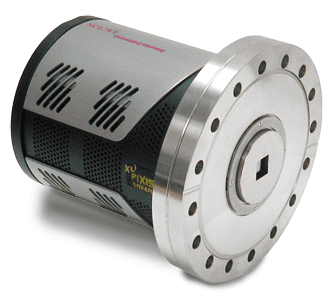Leifeng Cao
Review of Scientific Instruments
Introduction
Diffraction gratings are used as the dispersive element in spectral analysis from the IR to the soft X-Ray range. A common problem in any wavelength range is the influence of higher diffraction orders that can either overlap with the main signal or complicate calibration of the measurement instruments. A research team in China is developing new grating types based on nanotechnology fabrication techniques that show much larger suppression of higher diffraction orders than blazed diffraction gratings.
Interestingly the new gratings do not have a periodic, repeatable structure, but are made of millions of nanometer sized pillars arranged in a quasi-random fashion. To test the gratings in an X-Ray monochromator, the researchers used a sensitive CCD (PIXIS-XO) that detects very low signals by integrating for extended amounts of time. While the suppression of higher orders is very high in the nanopillar gratings the overall efficiency is low (however it is still comparable to the efficiency achieved by conventional methods of higher order suppression).

